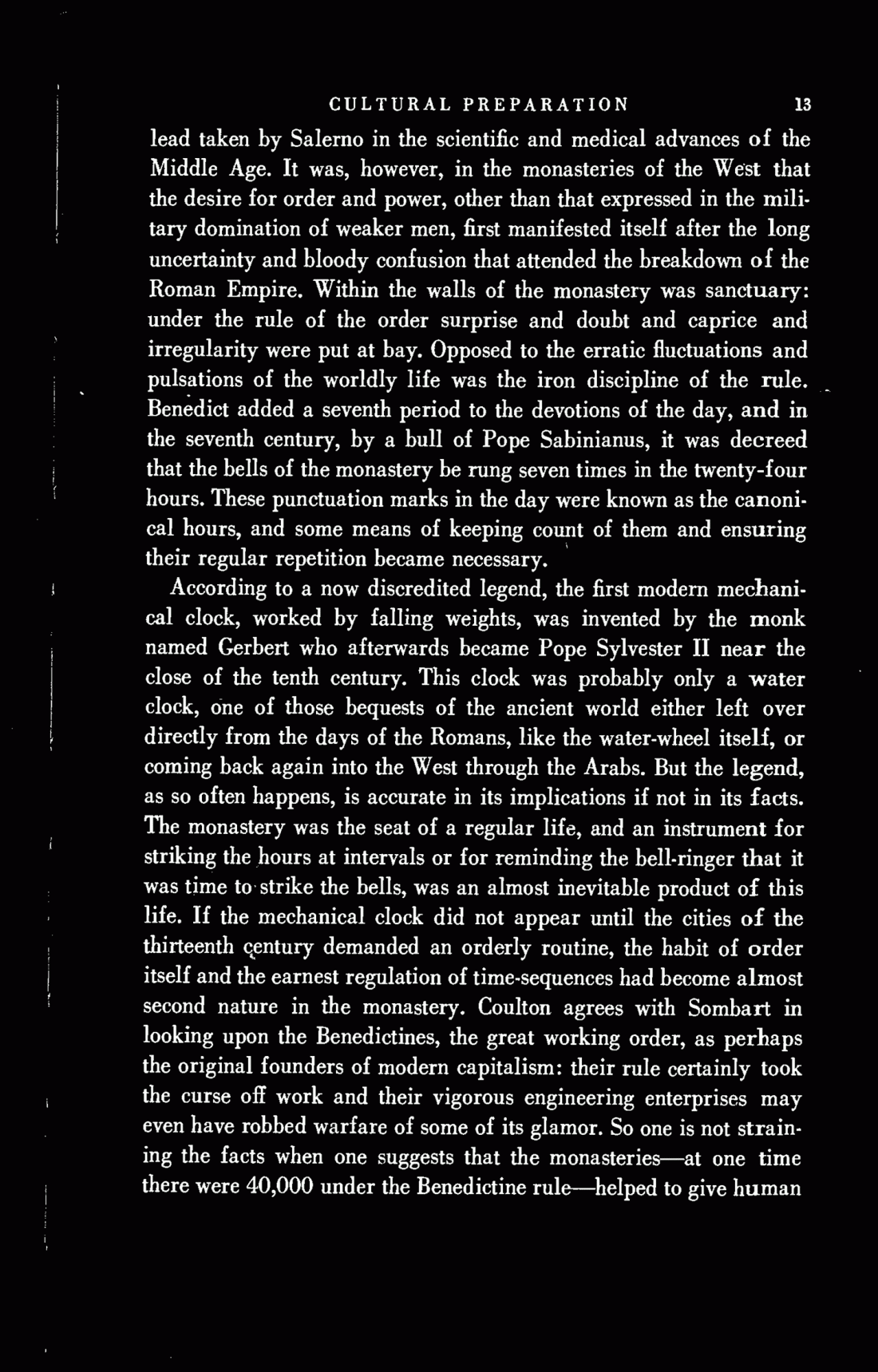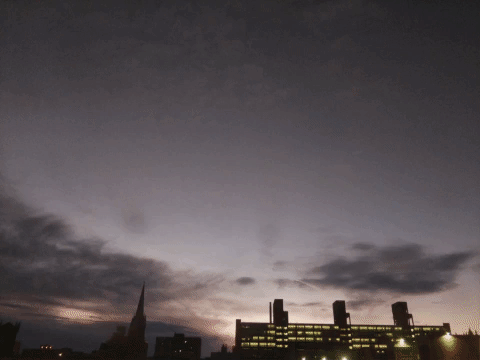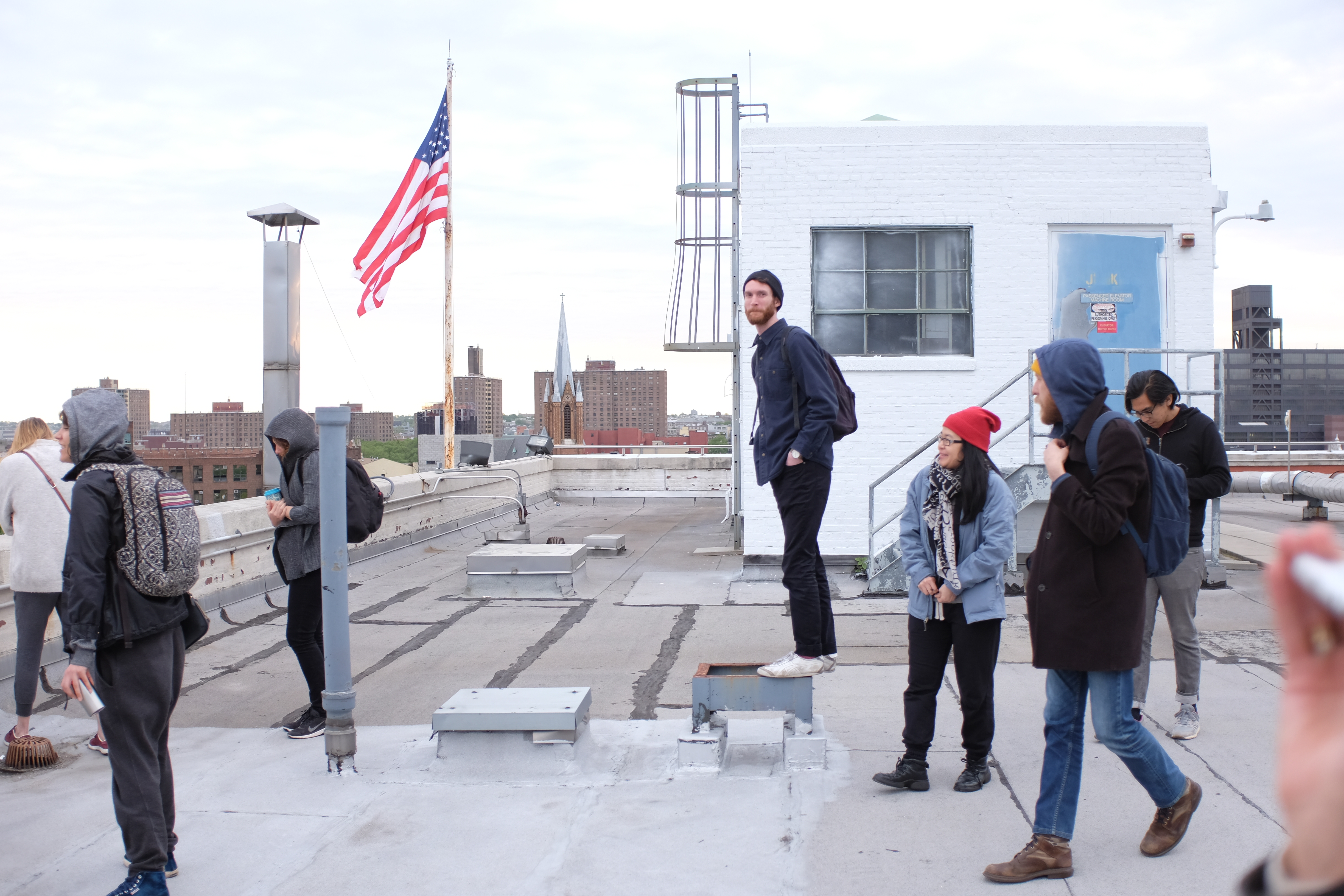
Dawn Flags / Dawn School VIII, 2017
Installation: custom printed 4' x 6' white nylon flag, custom software that dissects the dawn, projection of averaged color of dawn over 30 day period, three 4' x 8' panels reprinting passages from Lewis Mumford's "Technics and Civilization" (1934). Performance: Jonathan Crary, "24/7: Late Capitalism and the Ends of Sleep," Marita Sturken, et. al, "Technological Visions, The New Hopes and Fears that Shape New Technologies," Lewis Mumford, "Technics and Civilization,"5:13 am on Wednesday, May 10. Pfizer building. Coffee and readings provided. Dress warmly. Walkable shoes. Recording devices permitted.
Dawn School is a participatory art work that takes the form of itinerant classroom performances planned for a 10-year duration (2010-2020). It engages with contemporary and historical ideas of nature, time, labor, ecology, media, and the depletion of resources through the extractive processes of capitalism.
The basic instructions for the piece are always the same: “Wake before dawn. Take a walk. Watch the day emerge. Discuss.”
Prior Dawn Schools have investigated social and labor relationships in the industrial infrastructure around Greenpoint, Brooklyn, NY; the effects of closing a Ford plant in St. Paul, Minnesota; and signs of de-gentrification in the East Village. In the Summer 2011, Dawn School was held at the Massachusetts Museum of Contemporary Art (MASSMoCA) at North Adams, MA, at the invitation of Bureau for Open Culture. This work included a visit to Specialty Minerals, a quarry and mineral processing facility in neighboring Adams, MA.
The most recent iteration—held as part of the exhibition Con•Tin•U•Ums curated by Patrick Jaojoco at the former Pfizer pharmaceutical factory in Brooklyn—touched on the issues of fatigue, exhaustion, overproduction and over-medication in contemporary life. The assembled group of 10 or so participants met at the former Pfizer plant at 4:45 am, and proceeded to take a silent, meditative “sound walk” around the building. We tuned in to the sounds of the building itself—a humming machine—and the city as it stirred awake in the early morning light.
We then proceeded into the building to tour spaces once devoted to the production of drugs, including Viagra, and discuss texts by Lewis Mumford on the emergence of commodifiable “factory time” during the Industrial Revolution, and Jonathan Crary’s 24/7: Late Capitalism and the Ends of Sleep.
Participants talked about their sleep and work patterns, and their own exhaustion as artists, activists, and media producers coping with the expectations of an “always on” and “always plugged in” world. The specter of the global toxico-temporal biopower regime of Pfizer, “one of the world’s premier biopharmaceutical companies,” hung heavy in our imaginations as we toured FDA clean rooms and laboratories reminiscent of recent science fiction movies like Alien. Interestingly, these spaces are currently being converted into “incubator spaces” for food startups and catering kitchens in what is envisioned as the world’s largest hub for food startups. Thus we were experiencing not just a disused factory, but a transition in the making.
Dawn School asks participants to think about how our patterns of behavior are largely constrained and shaped by infrastructure and architecture, and how we might reuse or remake given or inherited structures and environments to be more equitable, just, and sustainable.





Performed as part of Con•tin•u•ums (time beyond lifetimes), curated by Patrick Jaojoco, SVA, Brooklyn, NY.